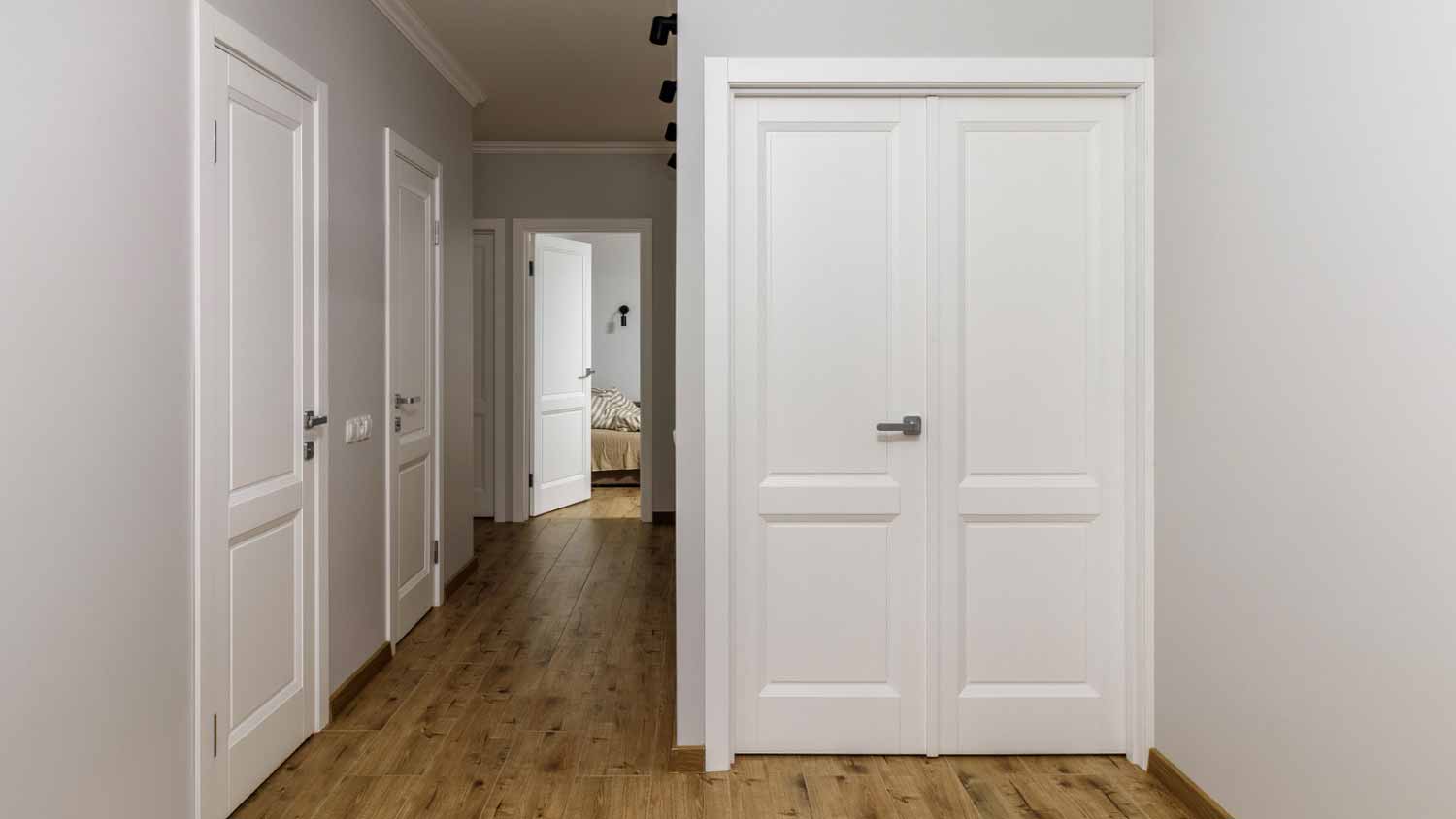
There’s nothing better than a dog door to give your pet free access to the outdoors. Use this dog door installation cost guide to see what it will cost you.
Complete the look with casing


Door casing is also called door trim or moulding.
It gives the door a finished look and may even come with the doorframe.
It comes in a wide range of styles to fit various design aesthetics.
Installing or replacing door casing can be a DIY job if you have the proper tools.
Even if you don’t know what it is, you probably see door casing multiple times a day. Door casing is the trim around doors to cover the gap between the doorframe and adjacent walls, creating a decorative, finished look. While it’s possible to go without door casing, it could look unfinished and detract from your decor. Let’s look closer at what door casing is and whether you need it.
Door casing is the trim surrounding a doorframe. If you look closely, you can see it on the adjacent walls. You’ll also hear it referred to as door trim or moulding. When a door and doorframe are installed, the frame is visible, and there’s a gap between the frame and the wall. The casing covers the gap and adds a decorative element to the door design.

Technically, you don’t need door casing as it doesn’t affect the door's functionality or other parts of the door. But without door casing, the cuts in the drywall that form the door opening would be visible, and the doorway would look unfinished. If a professional door installer is putting in new doors in your home or a door repair pro is restoring your doors, they can recommend door casing options.

As mentioned above, door casing is also referred to as trim or moulding, so all three are essentially the same—the pieces of wood around a doorframe. You can choose from a range of styles and use casing to enhance your home’s design. Intricate designs like lamb’s tongue add flair to a room, while simpler casing, like trim block and Colonial, is more understated.
You can also experiment with door casing sizes. Some door casings integrate side and transom windows (the window at the top of the door). They also come in different profiles that suit different design styles, including Colonial, Stafford, and Windsor.
Window casing is the same concept as door casing. In this case, the trim surrounds the window frame. You can use the same type of casing on windows and doors to complement one another, though you can opt for different types of casing to mix it up.
For example, install a more intricate casing around a statement window or entry door and simpler styles on your other windows and doors. The room can also influence your decision. You can choose different types of door casing and window casing for formal dining rooms, living rooms, or bedrooms.
Installing door casing can be a DIY job with the right tools. Door casing is attached with a brad nailer, and depending on the type of casing you install, the cuts are doable with a compound miter saw or circular saw. For simple designs, like a trim block and butted casing that require straight cuts, it’s a straightforward process—measure, cut, and nail.
Completing precise cuts for complicated designs, like mitered and dentil casing, takes more time and skill. Unless you have experience, your best bet is to hire a pro to install these styles.
If you hire a door repair pro near you, you can ask which door casing design they recommend. If you’re having doors installed by a professional, they’ll likely include door casing in their quote.
From average costs to expert advice, get all the answers you need to get your job done.

There’s nothing better than a dog door to give your pet free access to the outdoors. Use this dog door installation cost guide to see what it will cost you.

The frame is a crucial part of a door’s looks and proper functioning. Here’s how much you can expect to pay to replace a door frame in your home.

Sprucing up the barn or adding a rustic touch to your home? Use this guide to estimate barn door installation costs, so you can budget for your next project.

Learn how to identify and prevent water from leaking through your sliding glass door with a few easy, effective solutions.

If you’re new to an inclement-weather-prone area, it might be time to learn how to install a storm door. Explore our straightforward eight-step guide here.

You’re not imagining it: The door that previously fit your frame is suddenly too big. Learn how to fix a door that sticks using multiple methods here.